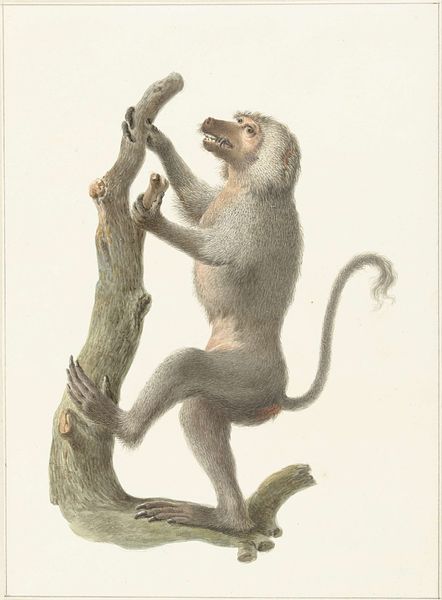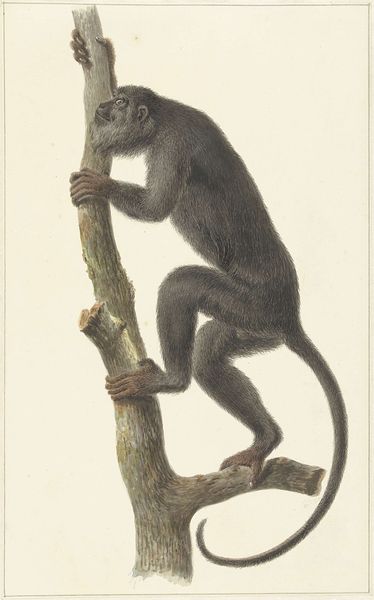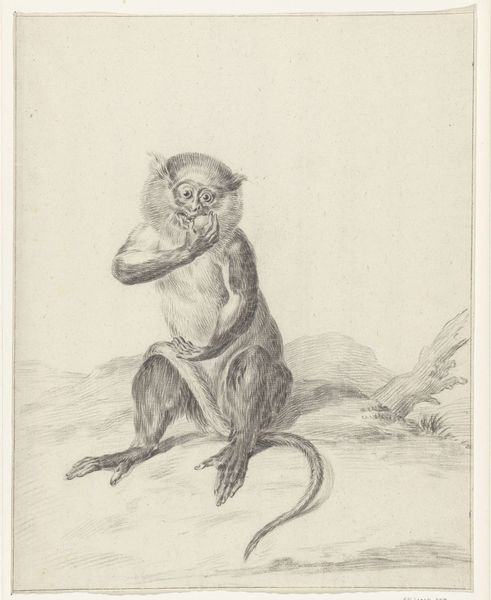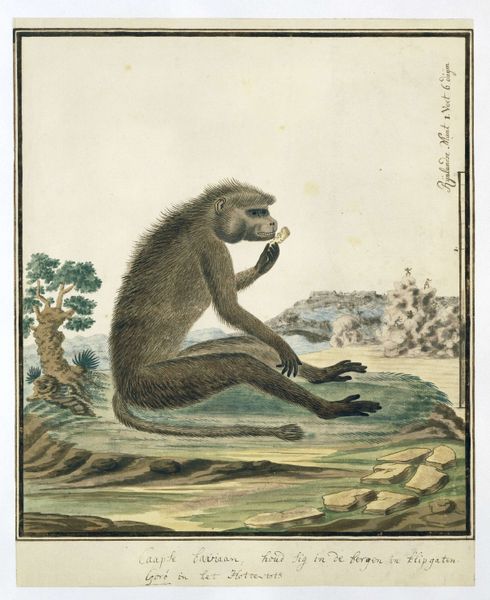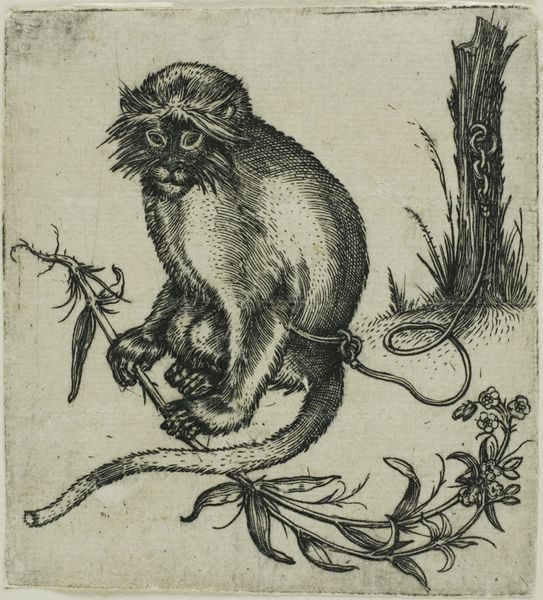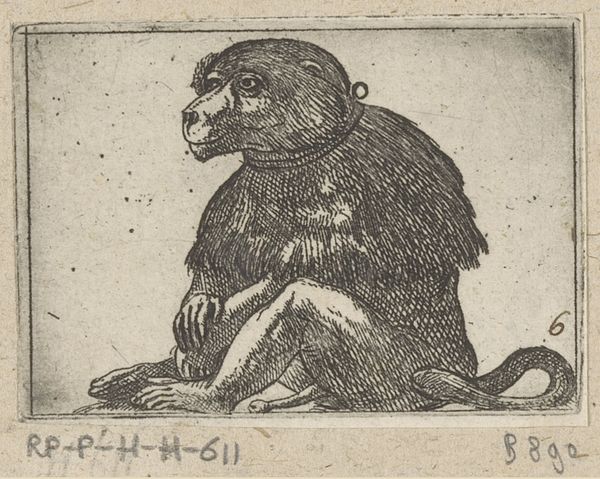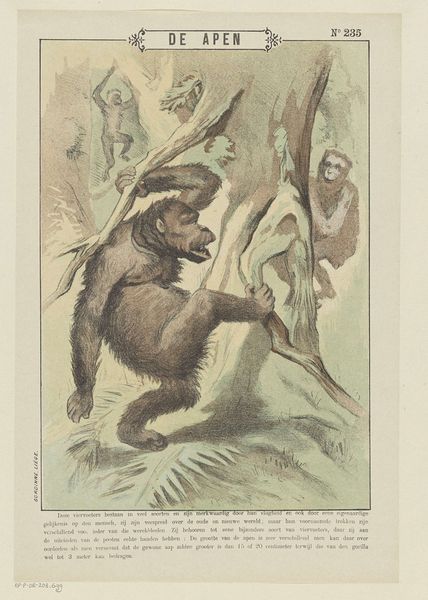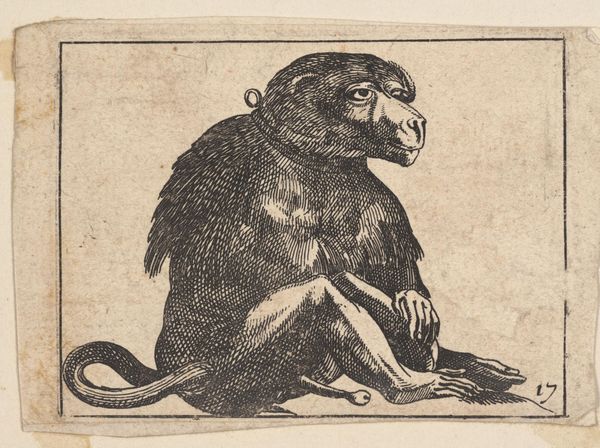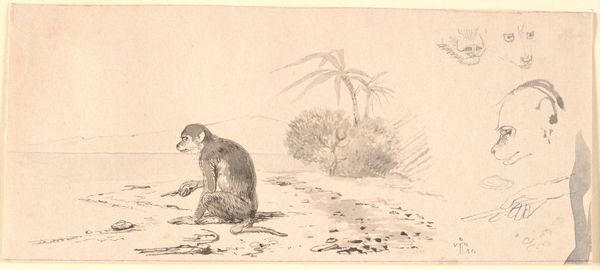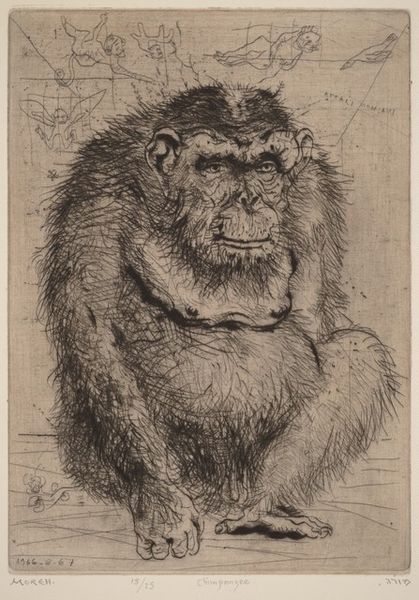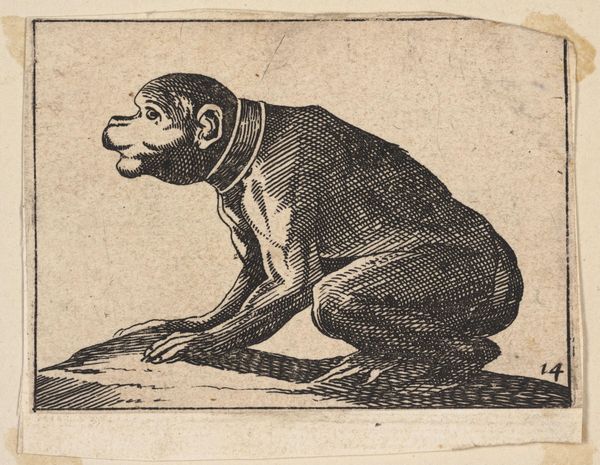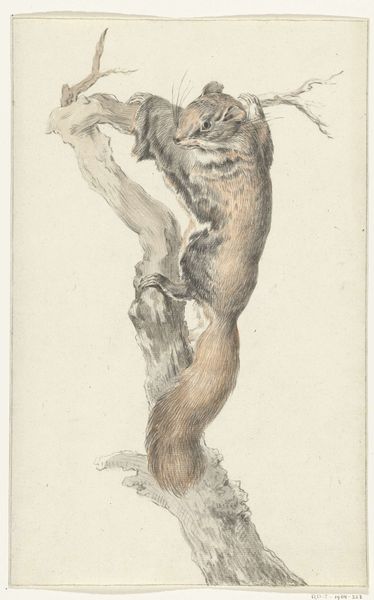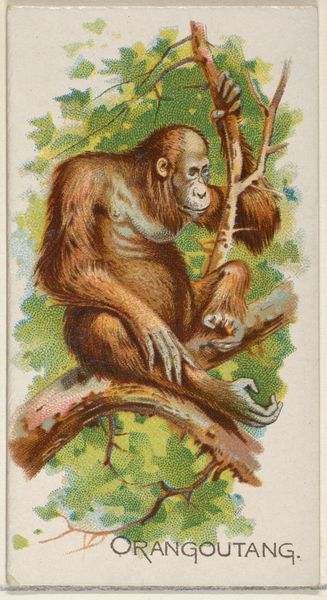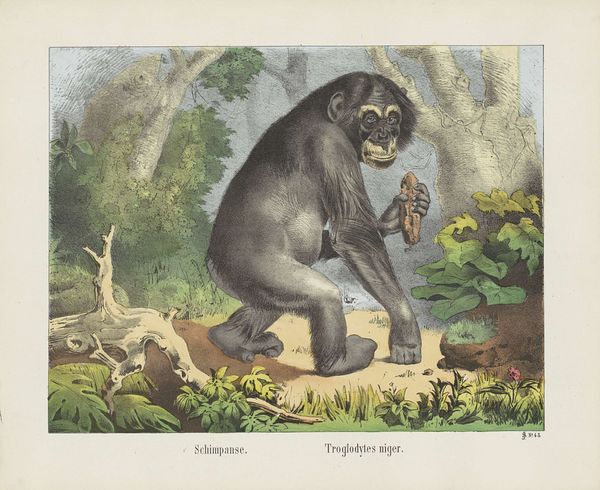
drawing, watercolor
#
drawing
#
pencil sketch
#
landscape
#
watercolor
#
pencil drawing
#
watercolour illustration
#
watercolor
Dimensions: height 282 mm, width 253 mm
Copyright: Rijks Museum: Open Domain
Pieter Pietersz. Barbiers created this image of a monkey, or ‘Aapje’, using pen and watercolor. During the late 18th and early 19th centuries, the rise of scientific exploration and colonialism brought Europeans into closer contact with the natural world, and with it, new ways of representing animals. What does it mean to picture this monkey alone, perched on a branch? Are we invited to admire its exotic nature, or to reflect on the historical context of Dutch exploration and exploitation? Consider the labor and power dynamics embedded in this image. What does it mean for an artist to depict a monkey, an animal often used to signify the ‘otherness’ of non-European people? The image prompts us to consider our relationship to the natural world, and to confront the complex legacies of colonialism. How does this image make you feel?
Comments
No comments
Be the first to comment and join the conversation on the ultimate creative platform.
